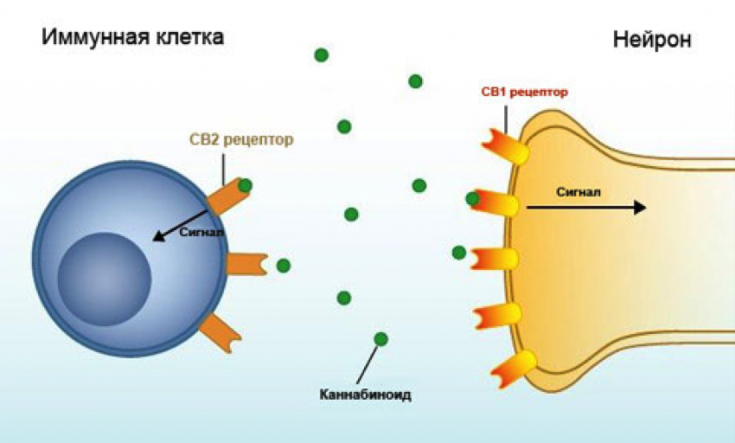Cannabidiol (CBD) is one of more than 100 phytocannabinoids, which are natural cannabinoids found in the oily resin of the flower or "bud" (and to a lesser extent in leaves) plants cannabis.
Both CBD and THC (delta9-tetrahydrocannabinol), another phytocannabinoid in cannabis flowers, may have anti-inflammatory and analgesic effects. The main difference is that THC is psychoactive while CBD is not.
Due to the positive properties of this compound, and the absence of a psychoactive effect, it is increasingly being used in various branches of medicine, and cosmetology is no exception.
On estet-portal.com read about the prospects for the use of cannabidiol in cosmetics.
Cannabidiol and its effects on the skin
CBD binds to endocannabinoid CB2 receptors, while THC binds to both CB1 and CB2.
Read also: Phytoestrogens for women: debunking popular myths
CB1 receptors are mainly found in the central nervous system. Exposure to them leads to CNS depression, euphoria, psychosis, memory impairment and increased appetite. At the same time, the effect on CB2 receptors, which are located in peripheral organs, affects the immune system:
- reducing pain sensitivity;
- providing an anti-inflammatory effect;
- stimulating antioxidant activity.

When applied topically, CBD reduces sebum production and has an anti-inflammatory effect. Therefore, CBD may have the potential to treat many dermatological conditions. Its sebum-regulating effect allows not only to treat acne, but also to reduce the oiliness of the skin in general.
The skin has the highest number and concentration of CB2 receptors in the body.
Several studies have linked CBD exposure to a reduction in the symptoms of the following diseases:
- scleroderma;
- fibrosis;
- epidermolysis bullosa.
There is also evidence that CBD, due to its anti-inflammatory properties accelerates wound healing.
Because cannabidiol reduces the development of fibrosis, it can be used to prevent the formation of hypertrophic scars as well as fibrous alopecia in patients with chronic dermatological diseases.
Prospects for the use of cannabidiol in cosmetology
The use of CBD products for acne treatment is promising as it can improve complexion and prevent scarring by reducing the activity of inflammatory process.
Read also: What is ferulic acid and why is it good for the skin
Because collagen degradation is largely due to inflammation (regardless of its cause – UV exposure, diet or stress), the anti-inflammatory and antioxidant effects of cannabidiol may also be beneficial in the prevention of aging.
Read the most interesting articles in Facebook!
It should be noted that CB2 receptors are also activated in melanoma and squamous cell carcinoma. But can CBD somehow prevent skin tumor lesions – remains a mystery for now.
Cannabidiol protects the skin from photoaging and age-related changes. It activates the activity of fibroblasts, thereby triggering the processes of synthesis and regeneration. Cosmetics with cannabidiol are already beginning to appear in some pharmacies in the United States. And also the first funds are approved for use not only for medical purposes, but also for cosmetic ones. After all, this substance affects many cells of our body, but the skin reacts to it especially positively!
CBD – it is a compound that holds great promise in all branches of medicine, but its development as a medical ingredient is hampered by the psychoactive effects of its brother, THC. CBD is considered by researchers to be one of the most promising anti-aging agents of this century. It is necessary to obtain an evidence base for its effectiveness as well as safety in order to present this substance to the general public.

When will mankind be able to cast aside these prejudices and remember that: «Everything is poison ;and everything there medicine. Only the dose makes drug a poison and poison a cure» - then specialists will have one of the most powerful anti-inflammatory and anti-aging tools in their hands, which will probably replace many anti-aging remedies and procedures that are used today.
More useful information on our YouTube-channel:







Add a comment